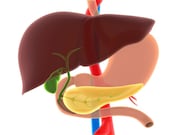ESC Guidelines Updated for Managing CVD in Diabetes
Guidelines address lifestyle recommendations, individualized BP targets, SGLT2 inhibitor, GLP1-RA tx
New Facebook, Instagram Pop-Ups Counter Vaccine Misinformation
Social media sites aim to counter the spread of antivaccination misinformation
Menstrual Cycles More Varied Than Previously Thought
Tracking basal body temperature and other parameters improves accuracy of ovulation detection
Drinking More Coffee Tied to Lower Risk for Gallstone Disease
Individuals with genetic variants linked to increased coffee consumption have reduced risk for gallstones
Leading Causes of Adult Mortality Vary by Country Income Levels
Modifiable risk factors account for about 70 percent of cardiovascular disease cases, deaths
Cesarean Section Quality Initiative Cuts Opioid Use
Preoperative and postoperative process changes lead to faster recovery without increased pain
Proximity to Outbreak May Affect Attitudes in Vaccine Doubters
Vaccine skeptics close to measles outbreak likely to have more positive attitudes toward vaccination
Decreased Humoral Immunity to Mumps Seen in Young Adults
10 percent of college-aged students vaccinated in childhood had no detectable memory B cells to mumps
Autism Rates Up, Particularly Among Minority Children
Authors say minority rates passing those of whites and expected to continue
Drinking Soft Drinks Tied to Higher Risk for Early Death
Higher risk for death seen for drinking two or more sugar- or artificially sweetened soft drinks per day



















